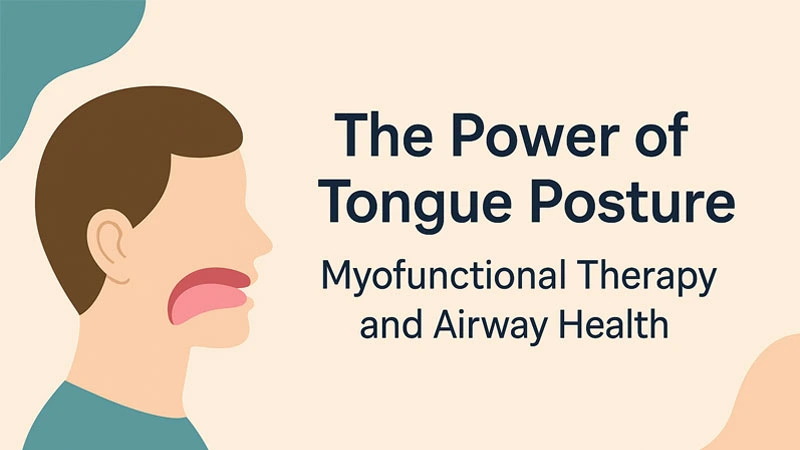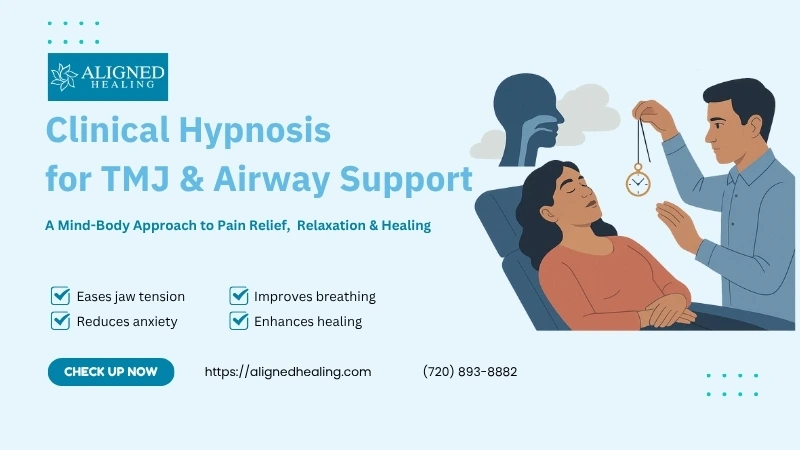When was the last time you thought about the position of your tongue? For most people, the answer is probably never. Yet this small, often-overlooked muscle plays a surprisingly big role in our overall health—especially when it comes to breathing and airway function.
In recent years, there’s been growing awareness around the importance of tongue posture and its impact on facial development, sleep quality, and even chronic health issues. At the heart of this conversation is a discipline called myofunctional therapy. Myofunctional therapy is a type of physical therapy for the face and mouth that can retrain muscles to promote better breathing, swallowing, and oral function.
Let’s dive into how proper tongue posture affects your health and how myofunctional therapy could make a lasting difference in your life.
What Is Tongue Posture?
Tongue posture refers to the resting position of your tongue when you’re not actively eating or speaking. Ideally, your tongue should rest gently against the roof of your mouth, with the tip just behind the front teeth and the back of the tongue elevated. Your lips should be closed, and you should be breathing through your nose, not your mouth.
Sounds simple enough, right? But in reality, many people—both children and adults—have developed poor oral habits over time. Mouth breathing, thumb sucking, prolonged pacifier use, or even allergies and chronic nasal congestion can lead to low tongue posture, where the tongue rests on the floor of the mouth instead of the roof.
Why Tongue Posture Matters for Airway Health
The position of your tongue plays a key role in airway development and function—especially during childhood when the face and jaw are still forming. Here’s how:
1. Facial Growth and Jaw Development
When the tongue consistently rests on the roof of the mouth, it helps shape the upper jaw (maxilla) and supports forward, symmetrical facial growth. This leads to a wider palate and more space for the teeth, nose, and airway. A low tongue posture, on the other hand, can result in a narrow palate, crowding of the teeth, and a smaller airway.
2. Breathing Efficiency
Poor tongue posture often goes hand-in-hand with mouth breathing, which can dry out the mouth, reduce oxygen absorption, and increase the risk of allergies and sleep-disordered breathing. Nose breathing, supported by proper tongue posture, filters, humidifies, and regulates air more efficiently.
3. Sleep and Energy
A compromised airway can lead to sleep-disordered breathing or obstructive sleep apnea. These conditions often cause fragmented sleep, fatigue, brain fog, and even cardiovascular issues over time. Ensuring that the tongue is in the right place can help keep the airway open, especially during sleep.
What Is Myofunctional Therapy?
Myofunctional therapy is a set of exercises and techniques designed to retrain the muscles of the face, mouth, and tongue. Think of it as physical therapy for the orofacial muscles.
The goal is to establish proper habits, such as:
- Correct tongue posture
- Nasal breathing
- Proper swallowing mechanics
- Balanced facial muscle use
A myofunctional therapist will assess how your tongue and facial muscles are functioning and create a personalized exercise plan to help you develop healthier patterns.
Benefits of Myofunctional Therapy
The benefits of correcting tongue posture through myofunctional therapy are wide-ranging and can include:
- Improved breathing: By training the tongue to rest properly and encouraging nasal breathing, clients often experience clearer airways and more efficient oxygen intake.
- Better sleep: Many people report deeper, more restful sleep after improving their tongue posture—especially those with sleep apnea or snoring.
- Orthodontic support: For children and teens undergoing orthodontic treatment, myofunctional therapy can help stabilize results by guiding proper tongue and jaw function.
- Enhanced facial symmetry: Proper tongue posture can contribute to balanced facial growth in children and improved facial tone in adults.
- Improved speech and swallowing: Many speech or swallowing difficulties are linked to poor oral muscle coordination, which can be addressed through therapy.
Who Can Benefit from Myofunctional Therapy?
Myofunctional therapy isn’t just for kids with braces. It can help:
- Children with mouth breathing, tongue thrust, or frequent open-mouth posture
- Adults with sleep apnea, snoring, or chronic nasal congestion
- People recovering from tongue-tie surgery
- Anyone interested in optimizing their breathing, posture, and overall wellness
Getting Started
If you suspect your tongue posture might be affecting your health, you’re not alone—and the good news is that it’s never too late to start making improvements.
A certified myofunctional therapist can perform an evaluation and guide you through simple, daily exercises tailored to your needs. Many clients see noticeable changes within weeks, while long-term benefits can continue for years.
Final Thoughts
The position of your tongue might seem like a small detail, but it’s actually a foundational piece of the puzzle when it comes to airway health, sleep, and overall wellness. Myofunctional therapy offers a safe, non-invasive way to support these systems and empower you to take charge of your health.
We welcome you to contact us today at Aligned Healing to learn more.






